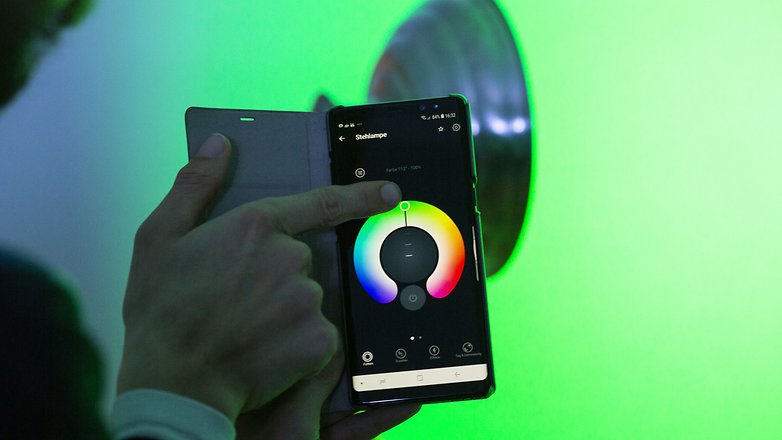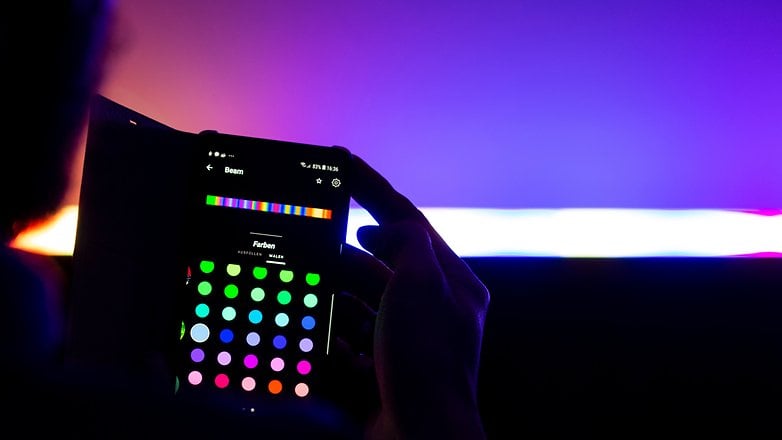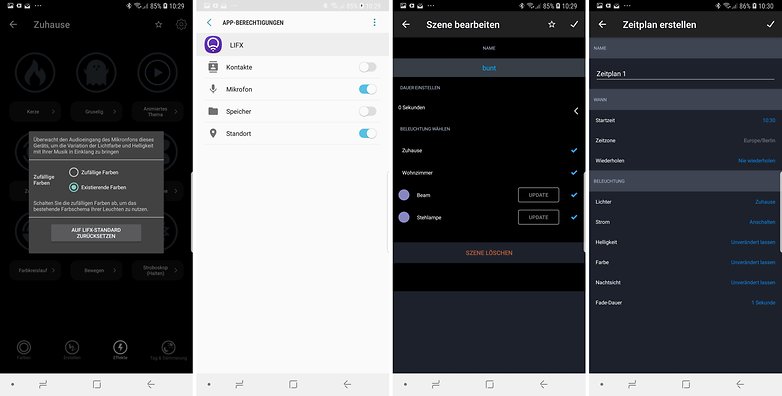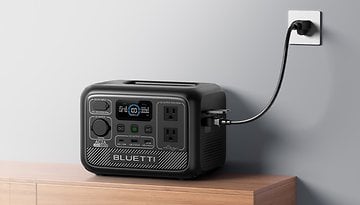LIFX Wi-Fi lighting review: LED bulbs that really shine


Read in other languages:
Cross-linked lamps are currently available in many forms. With a bridge or without one, with the possibility of networking with Philips Hue or without. Cheap or expensive. LIFX sent us two samples demonstrating their Wi-Fi-based system without the need for a bridge. The LIFX A60 and LIFX Beam lamps proved to be a great addition to my household. Here's why.
Good
- Simple operation
- Excellent brightness
- Beam light completely customizable
- Entertaining animations
Bad
- High price
- Magnetic contacts on the beam are wobbly
LIFX Beam release date and price
The LIFX bulbs tested here are quite expensive outside of savings campaigns. The A60, a Wi-Fi LED bulb for E27 sockets with 1,100 lumens of maximum brightness costs $59.99 individually. The beam with six segments and a right angle costs $149.99, although at the time of writing there is currently a deal for $20 off when you buy directly from LIFX.
LIFX Beam design and build quality
In this review, we looked at the Beam and the A60. The former is more interesting because with a total length of up to 1.83 meters - it colorfully covers rather a large area of your room. Since the segments each have ten LEDs, the resolution of the beam is much finer than initially visible.

The A60 is particularly interesting for a seemingly simple E27 LED bulb, as its brightness is stated to be up to 1,100 lumens; a significantly higher maximum value than Philips Hue, for example, which only goes up to 800 lumens. Nevertheless, the LED lamp is able to produce all the colors of the RGB spectrum.


Simple but wobbly construction
You can build the beam either lengthwise, in an L or in a T-shape. You can use the 3M adhesive strips, which are already attached on one side, to fix it to your wall or furniture. If you do not do this, the segments, which are otherwise only magnetically fixed, quickly lose all or part of their contact. They can fall out or behave strangely.

The power connection, which is also magnetically fixed, is located on a two-meter-long cable that ends at the Wi-Fi antenna. From there, a 0.5-meter long cable goes on to the transformer in your socket. Since the cable only adheres magnetically to the beam, only a slight pull should be applied to it. Interruptions can quickly occur here as well. In our first sample, we even had to replace the cable because of persistent problems.

The installation of the A60 is trivial. Old lamp out, LIFX A60 in, done. The lamp can still be operated via the normal light switch. The A60 always returns to the previously active state. If you had set it to dark red and switched it off at the switch, it will be red one day later when you switch it on at the same light switch. The LIFX lamps have no battery, as is the case with the Sengled Everbright.
The setup continues via software
You first set up the LIFX lamps through the app. After a loose contact in the Wi-Fi adapter of the beam, which we had to fix by sending for a second sample, we were able to set up the LIFX lamps in the app and link them to smart assistants in the house. During our tests, we used the Google Assistant over two connected Google Home Max speakers. LIFX can also operate with:
- Nest
- IFTT
- Google Assistant
- Smart things
- Amazon Alexa
- Logitech Harmony
- Cortana
- Apple HomeKit / Siri
So there is no lack of smart integration. Unfortunately, the functionality of voice commands is very limited. So I wasn't able to activate the scenes created in the LIFX app using an "Okay Google!" command. I only had the choice between basic colors and the brightness level as a percentage. The grouping in rooms and the switching all bulbs in a room on and off, on the other hand, was simple.

The software is very easy to use . In the basic functions, you set color or white tone and brightness; either by bulb or by room; or for all bulbs in your home at the same time. The respective constellations can then be saved as "scene" and later started via DeepL access. You can also place these shortcuts on the start screen of your smartphone or tablet using the Android widget.

In addition to the basic functions, there are predefined themes that smoke rooms with several LIFX lamps in a colorful mood. Due to its structure, the beam can display several of these colors at once. The app also offers the option of drawing colors over its entire length.

If that's not colorful enough for you, the LIFX app also offers animation schemes. So you can make the bulbs flicker like a chimney fire. Or you can let the lamps oscillate to the beat of music. The latter option permanently listens to the microphone of your smartphone. Not only does this feature turn your smartphone into a bug, it also worked badly in my tests. The beats were not recognized accurately and the hoped-for disco effect did not occur. So I worked with the quieter "Random" effect, which chaotically shifts the RGB spectrum with all the lamps.

LIFX and Google are not best friends
If you operate the bulbs by app, they react immediately. Voice commands, on the other hand, sometimes arrive at the LIFX bulbs several seconds later due to the enormous network and computing overhead.

Measurements of the power consumption are still available. In general, LIFX lamps are expected to have a minimally higher stand-by consumption than ZigBee-based lamps such as Philips Hue due to the always-ready Wi-Fi connection.
LIFX Beam technical specifications
LIFX Beam and LIFX A60
| Beam | A60 | |
|---|---|---|
| Connection | Proprietary | E27 |
| Power | max. 27 Watt | max. 11 Watt |
| Stand-by | < 1 Watt (manufacturer) | 0,5 Watt (manufacturer) |
| Dimensions | 300 x 35 x 20 mm per segment + 35 x 35 x 20 mm for the angle | 63 x 63 x 115 mm |
| Weight | 96 grams per segment | 210 grams |
| Colors | RGB, white in 2,500 K to 9,000 K | RGB, white in 2,500 K to 9,000 K |
| Wi-Fi | 802.11b,g,n, WPA/2 | 802.11b,g,n, WPA2 |
Final verdict
So if you are not turned off by the high price tag, you'll probably enjoy the LIFX lamps. There are several smaller and cheaper alternatives to the bright A60. Instead of the beam, maybe the Magic Strip is a cheaper alternative for you; its operation is congruent with that of the beam.















